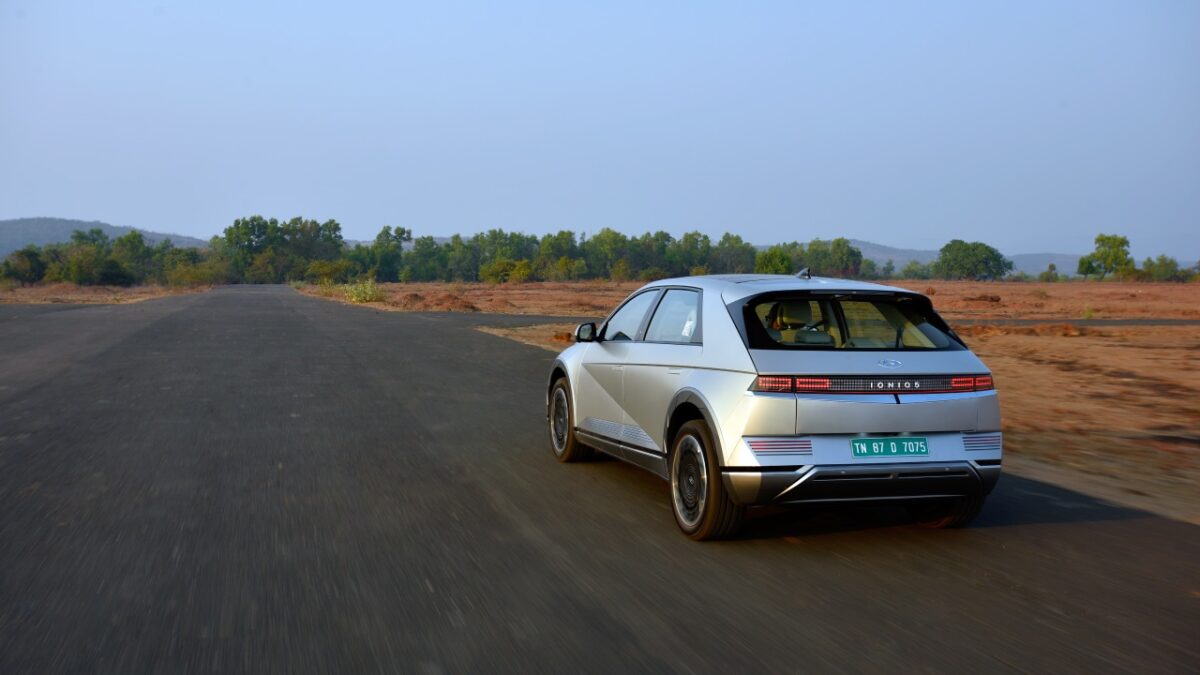Electric Vehicles (EVs) are all the rage today. Yet, like every game-changing technology, they’ve also become the subject of countless myths. While EVs are picking sales, some myths seem to have a stubborn grip on everyone’s imagination. Today, let’s debunk a handful of false “facts” –
EVs Don’t Have Enough Range
The idea that EVs can’t go far without running out of charge is one of the biggest myths. True, early EVs had a pretty small range, but that’s from a bygone era. Today, advancements in battery technology and efficiency mean EVs can go the distance—literally. Take the Hyundai Ioniq 5, for example. This award-winning EV can deliver up to 631 km of range (ARAI-certified) on a single charge. That’s enough to drive from Delhi to Jaipur and back with still some juice left. Even mid-range EVs now offer around 300-400 km per charge, which is more than sufficient for most daily commutes and even weekend getaways.
Still worried about range? Modern EVs offer excellent solutions to ease range anxiety. For instance, Hyundai’s MyHyundai app takes this a step further by showing real-time availability of nearby chargers and estimated charging times. This makes long journeys smoother than ever. Reality Check: With ranges that rival (and sometimes even exceed) petrol or diesel cars on a single tank, EVs are more than capable of covering your needs.

EVs Are Expensive
The sticker price of an EV might seem a bit higher than that of a petrol or diesel car at first glance, but this myth ignores the bigger picture – EVs always turn out to be much more affordable over the due course of ownership. First things first, EVs are significantly cheaper to run. Electricity costs per kilometre are far lower than the cost of petrol or diesel. Add to that the lower maintenance costs, as EVs don’t have complicated engines, gearboxes, or exhaust systems. No oil changes and fewer moving parts lead to lower cost of maintenance.
Secondly, government incentives make EVs more affordable. In India, for example, FAME-II subsidies and state-level incentives can significantly reduce the on-road price. Many states even waive registration fees for EVs. Plus, tax benefits under Section 80EEB of the Income Tax Act allow EV buyers to save even more. Reality Check: While the initial price might seem high, owning an EV can actually save you money in the long run, making it a more economical choice.
India Lacks Sufficient Charging Infrastructure
This is perhaps the most overblown myth about EVs in India. It’s true that charging infrastructure is still growing, but it’s expanding faster than many realize. According to recent data, the number of public charging stations in India has grown exponentially in the last few years, and with government and private investment pouring in, this growth will only accelerate. Additionally, home charging is a game-changer for EV owners. Most EVs come with portable chargers that can plug into a regular household socket. For faster charging, dedicated wall boxes can be installed, allowing you to start each day with a full charge.
Furthermore, Apps like Hyundai’s MyHyundai App make finding chargers even easier by providing a real-time map of nearby charging points. The app ensures you’re never left guessing about where to juice up your EV, making road trips as seamless as possible. Reality Check: With a rapidly growing network of public chargers, widespread home-charging options, and smart navigation tools, India is far better equipped for EVs than the sceptics would have you believe.
EVs Are Boring to Drive
If you think EVs are just dull, silent machines for eco-conscious commuters, you’re missing out on the fun. EVs can be absolute thrill machines thanks to their instant torque delivery. Unlike internal combustion engine (ICE) cars, EVs don’t need to build revs to deliver peak torque—it’s available the moment you hit the accelerator. Take the Hyundai Ioniq 5 again. This EV can sprint from 0 to 100 km/h in just 5.2 seconds, putting some sports sedans to shame. And because there’s no lag, the acceleration feels exhilaratingly quick and smooth. Even more affordable EVs like the Hyundai Kona Electric deliver a surprisingly engaging driving experience.

Then there’s the handling. With batteries positioned low in the chassis, EVs have a low centre of gravity, enhancing stability and making cornering more fun. Add regenerative braking into the mix, which not only helps slow the car quicker but also recaptures energy, and you’ve got a driving experience that’s anything but boring. Reality Check: EVs aren’t just eco-friendly; they can be as thrilling to drive as their ICE counterparts—sometimes even more so.
Also Read: 5 Things Nobody Told You About Electric Cars
EVs Can’t Be Driven on Water-Logged Roads
Let’s now come to another huge myth. Many assume EVs are unsafe or unreliable in water-logged conditions, but modern EVs are designed to handle such scenarios quite well. In fact, EVs undergo rigorous testing to ensure safety and performance in adverse conditions. Electric vehicles are sealed against water ingress, with critical components like batteries and electric motors placed in watertight casings. Most EVs meet stringent IP67 or IP68 water resistance standards, meaning they can withstand immersion in water up to a certain depth for a specified time. Reality Check: EVs are built to handle water-logged roads at least as competently as ICE vehicles, making this myth totally baseless.
Final Thoughts
Electric vehicles have come a long way, and the myths surrounding them are more a relic of the past than a reflection of their present. So, the next time someone tries to pull out one of these “facts” about EVs, you’ll know better than to believe them.


